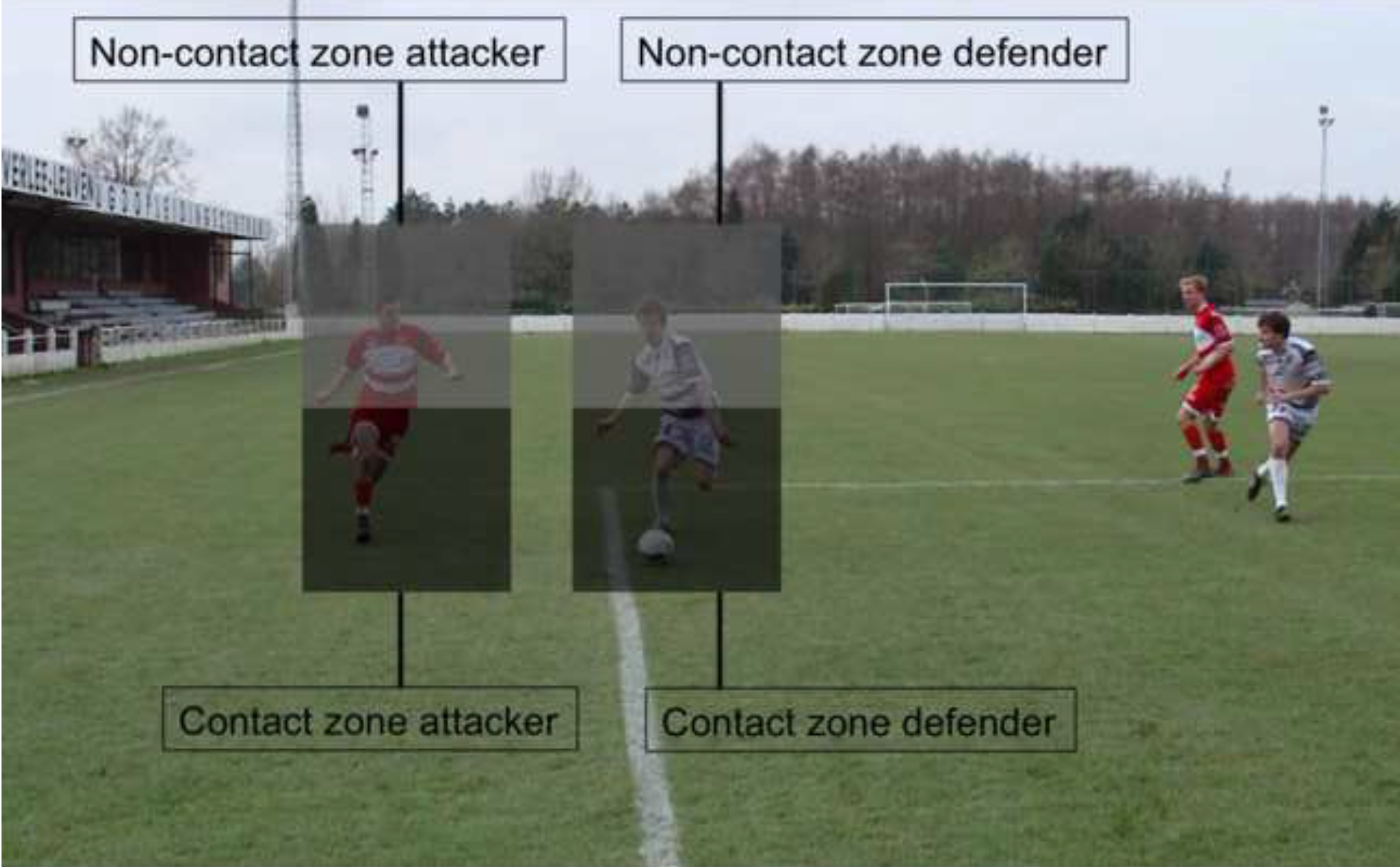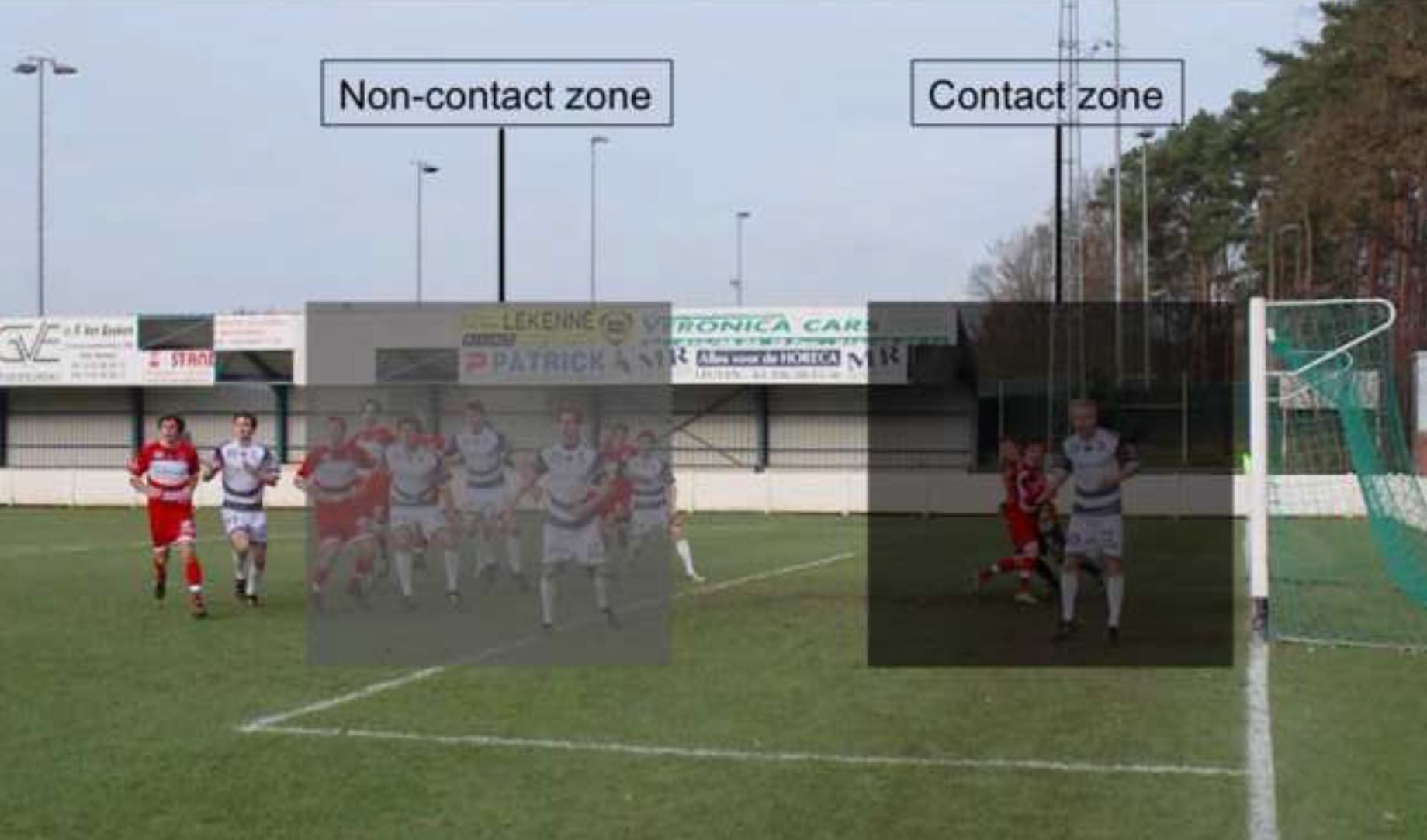26th of June 2006. Soccer World Cup. Italy-v-Australia is tied at 0-0 in the 95th minute. Fabio Grosso, Italy’s hero who ultimately secured the World Cup against France during a penalty shoot-out, dribbles his way into the penalty area and falls over an Australia defender. The referee awards a penalty to Italy, and the rest is sad history (sad if you are Australian, that is). There is much debate about this incident, and in particular whether Grosso just threw himself to the ground (known as a “dirty dive”) to fool the referee. The incidence features in Yahoo’s list of “top 10 World Cup dives of all time”, so clearly Australia should not have been sent home.
Referees matter a great deal, and not only during the World Cup.
So what determines the performance of expert referees? How can they ever hope to keep track of a ball and 22 turbo-charged players among the noise of a crowd of thousands?
A recent article in the Psychonomic Society’s new journal, Cognitive Research: Principles & Implications (or CRPI for short) tackled this question. Researchers Jochim Spitz, Koen Put, Johan Wagemans, Mark Williams, and Werner Helsen presented video-recorded foul play situations to elite and sub-elite association soccer referees and compared their abilities and analysed the processes underlying their performance.
It has long been known that elite athletes have refined perceptual-cognitive skills that are relevant to their domain. For example, skilled soccer players are more adept at anticipating the outcome of a game situation as it dynamically unfolds than novice players, even though expert and novice athletes generally do not differ in their basic visual function, such as on tests of acuity or sensitivity. That is, expert athletes do not have a better perceptual “apparatus” but they know how to use it better.
Like the athletes they monitor, referees must keep track of an unfolding game at all times—but unlike athletes, referees’ perception is not a precursor to intense motor activity. Spitz and colleagues argue that it is therefore even more important to understand referees’ perceptual skills.
Spitz and colleagues recruited referees of two levels of expertise: There were 20 elite referees who were involved in the first and second highest division of the Belgian soccer league, and there were a similar number of non-professional referees who were active at a lower competitive level.
The stimuli were created by competitive soccer players who simulated foul play situations in front of a camera positioned next to one of the goal posts. There were two types of play situations: one situation involved only a few players (1 or 2 attackers vs. 2 defenders), and the other involved a larger group of 13-14 players from the two opposing teams being present in the penalty area after a corner kick. Each video clip contained exactly one incident that might constitute a possible infringement. The next figure shows an open-play scene, with the “contact zone” highlighted. The contact zone refers to those parts of a player’s body that are involved in the potential infringement:

For comparison, the next figure shows a scene from a corner-kick scenario:

Altogether there were 20 clips, most of which displayed actual infringements as determined by the consensus opinion of a panel of 3 expert judges.
The referees watched the video clips while their eye movements were being recorded for later analysis and indicated whether or not an infringement was present. Referees had to choose from one of 4 options: no infringement, and infringement meriting award of an indirect free kick, a direct free kick, or a penalty kick. After making their choice, the referees had to decide on the appropriate disciplinary action: a caution, a yellow card, or a red card. This categorical decision is far from trivial because it involves an assessment of how intentional and forceful the action was: did the player intend to knock over a defender or was he just being overzealous?
The results showed that the elite referees, perhaps unsurprisingly, were overall more accurate than the less experienced participants. In addition, perhaps unexpectedly, the open-play situations involving only a few players were adjudicated with considerably lower accuracy than the corner-kick situations. One reason for this difference may be that open-play situations that require a judgment occur far more frequently during a game than corner kicks. In consequence, referees build up experience with open-play situations far more quickly than with corner kicks.
Although the two groups of referees differed in accuracy, their fixation behavior was almost identical. In the open-play scenarios, all participants spent significantly more time fixating on the attacking player than the defender, although the elite referees additionally focused more on the contact zone (i.e., the body part involved in the infringement) of the attacker than the non-contact zone (a body part irrelevant to the infringement). In the corner-kick situation, all participants focused more on the contact zone than the non-contact zone, and no group differences emerged.
So what explains the overall superior accuracy of the elite referees? A partial answer can be obtained by differentiating between different types of errors committed by the referees. One possible source of error could be perceptual: the referee may just fail to see the infringement. Another source of error arises after perception, by miscategorizing what has been observed. Spitz and colleagues classified erroneous decisions as being perceptual or categorical based on how much time participants fixated on the contact zone: if errors were committed after only a brief fixation on the contact zone, they were categorized as perceptual. Conversely, when fixations were extended but errors nonetheless arose, then they were considered to be categorical in nature. It turned out that the elite referees showed a marked perceptual advantage over the less-experienced referees, whereas the advantage was slightly reduced for categorical errors.
Overall, the results are in line with the notion that elite referees have developed elaborate knowledge structures, which can efficiently guide perception and permit making decisions in a highly dynamic environment. Thus, elite referees rapidly identify and then focus on the most important information in the visual display.
Those skills enable referees to correctly call between 64% and 77% of incidents during actual games. Given the complexity of the game and its highly dynamic nature this range of accuracy appears quite impressive. Perhaps the referee in the Australia v. Italy game in 2006 should be forgiven.
Article focused on in this post:
Spitz J., Put, K., Wagemans, J., Williams, A. M., Helsen, W. F. (2016). Visual search behaviours of association football referees during assessment of foul play situations. Cognitive Research: Principles & Implications. DOI: 10.1186/s41235-016-0013-8.

1 Comment